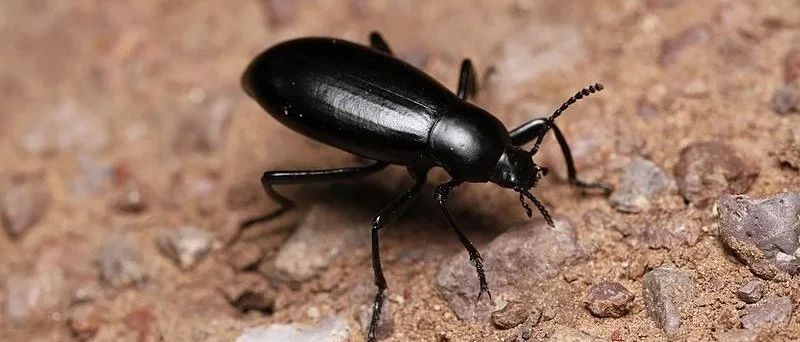
Vice rises ten: survival competition between locust-eating rats and spray beetles
This time, chemical weapons don't work.
We have previously told the story of toads swallowing fart bugs and being attacked by chemical weapons, but today we are going to introduce a predator who can control fart bugs.
the story takes place in Arizona in 1959. Insect expert Eisner (Thomas Eisner), is studying E. longicollis, a beetle of the genus (Eleodes) in the desert. E. longicollis is a black beetle about 3 centimeters long. When touched, it assumes a strange posture: head on the ground, body tilted, buttocks up. This is a typical defensive posture of the genus Coleoptera. It's kind of famous. Steinbeck (John Steinbeck) wrote it in a novel, and Native Americans thought the beetle was listening to ghosts.
Beetles of the genus Coleoptera. The source of the picture is: Insects Unlocked
its intention is obvious. There are two large glands at the end of the abdomen of the genus Coleoptera, which can secrete a yellow liquid containing quinones. Quinone is a strong irritant to vertebrates and arthropods and is a self-defense weapon for many animals. If the beetle takes a handstand position and the other party does not stop the provocation, the beetle will use chemical weapons. The venom usually oozes slowly from an opening near the anus and is sometimes ejected like Water Gun, up to a distance of up to 50 centimeters. It is volatile and stinks to the nose. If it comes into contact with the face, especially the eyes, it will feel obvious tingling.
the beetle's handstand is very similar to that of a skunk, not only as a preparation for firing a quinone cannon but also as an ultimatum to warn predators. The pseudo-golden needle worm is dark all over, stands out in the white sand, and has the function of warning color. Some non-toxic beetles imitate the black coat and handstand posture of the pseudo-golden needle beetle, thus pretending to be Li Kui and intimidating predators. It can be seen that the quinone cannon is a very effective weapon.
E. identifies assumes the typical defensive posture of the pseudo-golden needle worm. Photo: BugGuide, author: Jim Moore
however, chemical weapons are not invincible. The desert is littered with the remains of pseudo-golden needle worms, with wings, abdominal ends, and feet. Who overcame the chemical attack of the beetle? Eisner was confused. There are often teeth marks bitten by rats on the edge of the scabbard, and he was told that there was a southern locust rat (Onychomys torridus) in the desert. Although he is a cute little mouse on the outside, the locust-eating rat is a ferocious predator. It has a great appetite and is resistant to scorpion venom and can eat scorpions. Even other rodents will become its side dish. Could it be the answer?
Dress to impress in our collection of silver sequin bridesmaid dresses. This is the perfect place for your stunning collection!
South locust-eating rats can prey on scorpions. Photo source:: National Audubon Society, author: Photo courtesy of Ashlee and Matthew Rowe
Eisner set up a rat trap at the crime scene, and the south-eating locust rat was soon caught. Something wonderful happened when he gave them E. longicollis: without waiting for the beetle to take a defensive position, the mouse hugged it with its front paws, stood upright, butt down, and poked into the ground. All the beetle's chemical weapons were sprayed into the soil, and a drop missed the mouse. The action of cracking is so fast and so simple that it makes people dumbfounded. At the same time, the south-eating locust rats began to chew on the beetles, starting from scratch, leaving the ends of their sheath wings, legs, and abdomen. Later, Eisner discovered that the quinone in the beetle's venom gland had almost been sprayed out, but the surface was not damaged, and the mouse carefully avoided the beetle's "ammunition depot."
the southern locust-eating rat subdued the beetle that sprayed the quinone cannon.